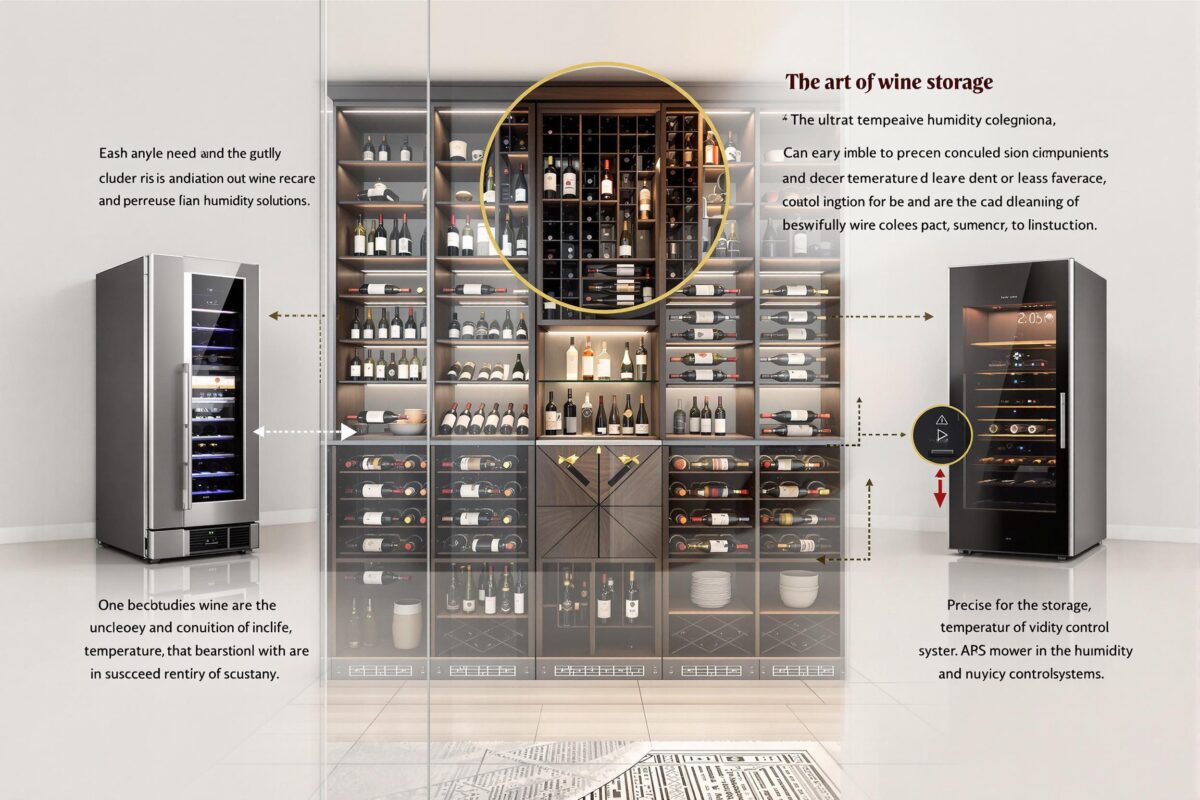Understanding Proper Wine Storage
Optimal wine storage goes beyond simply finding a place to put your bottles. It’s about creating an environment that nurtures the wine’s delicate chemistry. Wine is a living thing, constantly evolving. Factors like temperature, light, and humidity significantly impact this evolution. Improper storage accelerates degradation, leading to unpleasant flavors, oxidation, and loss of those nuanced aromas we love. Ideal conditions, on the other hand, allow wines to age gracefully, developing complexity and richness over time.
The Impact of Temperature
Temperature is arguably the most crucial factor. A consistent temperature between 50°F (10°C) and 65°F (18°C) is generally ideal. Fluctuations are the real enemy. High temperatures accelerate aging, resulting in “cooked” or stewed flavors. Low temperatures can hinder development. Maintaining a stable temperature is paramount, even small variations over time can significantly degrade quality.
Humidity’s Role
Humidity is another crucial, often underestimated element. Ideal humidity ranges between 50% and 80%. Low humidity dries out corks, allowing air to enter and spoil the wine. High humidity can promote mold growth, damaging labels and your cellar. Maintaining proper humidity protects your wine and preserves its presentation.
Light Exposure and Wine
Light, especially UV rays, is detrimental to wine. It accelerates chemical reactions, leading to off-flavors. While dark glass offers some protection, prolonged exposure poses a risk. Store wine in a dark environment, away from direct sunlight and strong artificial light.
Modern Wine Storage Trends
Wine storage is evolving, incorporating technology, sustainability, and innovative design. Today’s wine enthusiast seeks both functionality and visual appeal.
Smart Wine Cellars
Smart cellars represent a leap forward. These systems use IoT technology to provide precise control and monitoring. Sensors track temperature, humidity, and light, allowing real-time adjustments and alerts via smartphone apps. Some even integrate with inventory management systems, streamlining your collection.
Sustainability in Design
Sustainability is a growing concern. Eco-conscious consumers want storage solutions with minimal environmental impact. This translates to using reclaimed wood, energy-efficient cooling, and natural insulation. Compact designs also address space constraints while minimizing resource consumption.
Design Innovations
Wine storage is becoming a statement piece. Wine walls are transforming bottles into visual displays, incorporating glass doors, lighting, and custom racking. These designs seamlessly blend with interior décor, showcasing your collection as part of your home’s aesthetic.
Challenges in Wine Storage
Despite advancements, challenges persist. Recognizing potential causes of spoilage is key to protecting your investment.
Temperature Fluctuations
Fluctuations are a silent killer. They cause expansion and contraction within the bottle, stressing the cork and allowing air in. Storing wine near windows or heating vents exposes it to damaging temperature swings.
Humidity Control
Inadequate humidity control jeopardizes cork integrity. Dry environments desiccate corks, allowing air to seep into the bottle. Consider the damage done by storing wine in a standard refrigerator for extended periods.
Vibration and Movement
While less discussed, vibration disrupts sediment formation in aging wines and can accelerate chemical reactions. Avoid storing wine near sources of constant vibration, like washing machines or heavy foot traffic areas.
Actionable Storage Techniques
Implementing proper storage is within everyone’s reach, regardless of experience or collection size. These tips can transform any space into a suitable environment.
Tips for Beginners
- Find a cool, dark, and stable location.
- Maintain a cool temperature.
- Minimize light exposure.
- Store cork-sealed bottles horizontally.
- Minimize handling and vibration.
Advanced Tips for Enthusiasts
- Invest in a wine cellar or refrigerator.
- Maintain precise temperature control.
- Control humidity meticulously.
- Eliminate light completely.
- Minimize vibration.
- Use an inventory management system.
- Ensure proper airflow and ventilation.
Traditional vs. Modern Storage
Choosing the right solution means considering both traditional and modern options.
Traditional Cellars
Traditional cellars, often underground, leverage natural insulation for temperature and humidity stability. They offer a classic aesthetic, but construction can be costly and control less precise than modern methods.
Modern Wine Refrigerators
Modern refrigerators provide precise temperature and humidity control in a convenient package. They are easier to install and offer consistent control but consume electricity and have limited capacity.
Smart Wine Cellars
Smart cellars are the cutting edge, integrating advanced technology for optimized control and monitoring. They offer the highest level of control and convenience, but they represent a significant investment.
Expert Recommendations
Sommeliers, with their deep wine knowledge, offer invaluable insights into storage practices.
Sommelier Insights
Sommeliers stress consistency above all else. They emphasize darkness, proper humidity, and horizontal storage as fundamental principles.
Ageing Wine Tips
Successful aging requires understanding individual wine characteristics. Select wines with aging potential, maintain a cool temperature, and exercise patience. Regular monitoring of cellar conditions is also key.
Mastering wine storage is an investment. By understanding temperature, humidity, light, and vibration, you can protect your collection. Whether you choose a traditional cellar or a modern smart solution, these principles remain paramount. Explore the world of wine and discover the perfect additions to your well-preserved collection.
